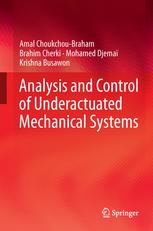

Most ebook files are in PDF format, so you can easily read them using various software such as Foxit Reader or directly on the Google Chrome browser.
Some ebook files are released by publishers in other formats such as .awz, .mobi, .epub, .fb2, etc. You may need to install specific software to read these formats on mobile/PC, such as Calibre.
Please read the tutorial at this link: https://ebookbell.com/faq
We offer FREE conversion to the popular formats you request; however, this may take some time. Therefore, right after payment, please email us, and we will try to provide the service as quickly as possible.
For some exceptional file formats or broken links (if any), please refrain from opening any disputes. Instead, email us first, and we will try to assist within a maximum of 6 hours.
EbookBell Team

0.0
0 reviewsThis monograph provides readers with tools for the analysis, and control of systems with fewer control inputs than degrees of freedom to be controlled, i.e., underactuated systems. The text deals with the consequences of a lack of a general theory that would allow methodical treatment of such systems and the ad hoc approach to control design that often results, imposing a level of organization whenever the latter is lacking.
The authors take as their starting point the construction of a graphical characterization or control flow diagram reflecting the transmission of generalized forces through the degrees of freedom. Underactuated systems are classified according to the three main structures by which this is found to happen—chain, tree, and isolated vertex—and control design procedures proposed. The procedure is applied to several well-known examples of underactuated systems: acrobot; pendubot; Tora system; ball and beam; inertia wheel; and robotic arm with elastic joint.
The text is illustrated with MATLAB®/Simulink® simulations that demonstrate the effectiveness of the methods detailed.
Readers interested in aircraft, vehicle control or various forms of walking robot will be able to learn from Underactuated Mechanical Systems how to estimate the degree of complexity required in the control design of several classes of underactuated systems and proceed on to further generate more systematic control laws according to its methods of analysis.